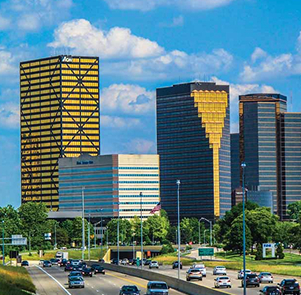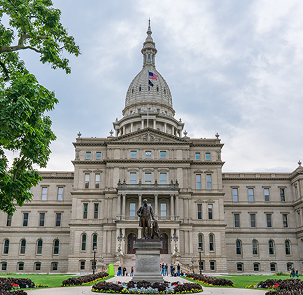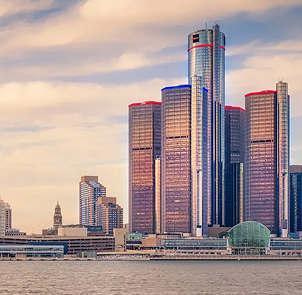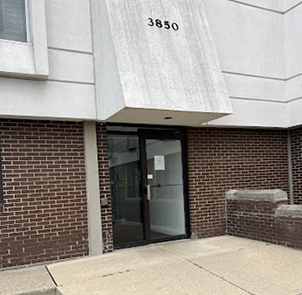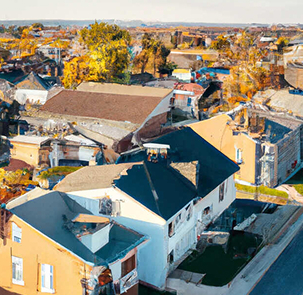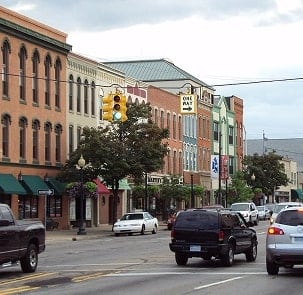What Happens if A Self-Driving Car Malfunctions?
In the 1920s, shortly after automobiles displaced horses, plucky inventors began the first efforts to create self-driving cars. A century later, this vision is finally nearing reality. Year-in and year-out, automobile accidents kill tens of thousands of Americans. Driver error causes most of these deaths, and autonomous vehicles — as envisioned by their supporters — promise to eliminate that human shortcoming. To achieve this goal, the nation will need to grapple with profound, legal, political and moral quandaries. The route to a safer transportation future requires answering this question: What happens when a self-driving car malfunctions?
The Tempe Incident: A Technology Failure’s Fatal Consequences
In February 2017, rideshare powerhouse Uber began testing self-driving vehicles in four cities, including Tempe, Arizona. As a safety measure, two Uber employees occupied both front seats of the test SUVs, with the driver-side occupant able to assume control of a vehicle if malfunctions occurred. In early 2018, Uber chose to continue the program with a single employee in the driver’s seat.
On March 18, 2018, after sunset, a 47-year-old Tempe resident attempted to walk her grocery-laden bicycle across a divided four-lane thoroughfare. Before completing her crossing, an Uber self-driving test SUV struck the woman. The Uber safety driver promptly dialed 911 to summon paramedics, but the victim died of injuries at the hospital. Five members of the victim’s family obtained legal counsel, and Uber quickly agreed to undisclosed settlements.
The Aftermath: Answers Lead to More Questions
Subsequent investigations by local law enforcement and the National Highway Safety Board produced these findings:
- While Uber’s test vehicles could safely brake for marked intersections while operating in safe-driving mode, the company judged the SUVs’ emergency braking as inadequate.
- The Uber safety driver, following company policy, disengaged the emergency braking function on the night of the accident. This action required the driver to apply the brakes between intersections if necessary.
- Even though the test vehicle’s combination of sensor hardware and decision-making software spotted an object in the roadway ahead, the system took far too long to identify a pedestrian. By the time the vehicle’s audio and visual alarms sounded, only 1.7 seconds remained before impact.
- Uber’s safety driver applied the vehicle’s brakes after the alarms, but surveillance video showed that she did not have her eyes fixed on the road for much of the approach to the accident site.
- Investigators determined that — even with less-than-ideal light — an attentive driver could have applied the brakes earlier. In the investigators’ view, this prompt action would have allowed the victim to traverse the street before impact.
Authorities declined to file charges against Uber, but a Maricopa County grand jury indicted the rideshare company’s safety driver on a single count of negligent homicide. The driver’s trial remains on hold, as authorities evaluate information uncovered by local journalists and whistle-blowers inside Uber. In the wake of the incident, supporters of self-driving vehicles point argue that human error led to the fatality, and newly refined systems would avert such tragedies. Opponents of autonomous vehicles assert that no amount of programming can handle every potential road hazard. As the argument proceeds, Michigan law resolutely embraces self-driving technology.
The SAVE Act: Michigan Charts a Self-Driving Automotive Future
In 2016, four landmark Michigan Senate bills became law. Collectively known as the SAVE Act, the legislation vaulted the state to the forefront of welcoming autonomous vehicle technology. The package received enthusiastic industry support, including General Motors, Ford, Toyota, parts-maker Delphi Automotive and rideshare provider Lyft. The legislation removed the requirement for a safety driver, a person who could monitor the vehicle’s operation and assume control if malfunctions occurred.
In other provisions, the legislation:
- Explicitly allows the operation of automated vehicles on Michigan’s highways and streets
- Prohibits local governments from taxing or regulating automated vehicles
- Permits the creation of on-demand networks of automated vehicles
- Establishes that an automated driving system is the driver in all questions regarding traffic laws
- Provides manufacturers with immunity from liability if other parties modify their systems without consent
- Exempts automated vehicles from distance regulations, allowing them to operate in closely grouped platoons
- Creates the Michigan Council on Future Mobility and mandates annual reports
SAVE Projects: A Glimpse of the Future?
A major feature of the legislation was the creation of Safe Autonomous Vehicle Projects. A SAVE Project is an “on-demand automated motor vehicle network”, not an individual self-driving car. Further, these networks do not operate like bus systems on fixed routes. To qualify as a SAVE Project, the service must offer point-to-point transportation in a specified area. Manufacturers may self-certify that projects conform to the legislation and begin operation after notifying Michigan’s secretary of state.
What happens if a SAVE Project vehicle malfunctions? All vehicles in the project must have automatic crash notification systems to summon first responders. As for the aftermath of an accident, the legislation specifies a departure from Michigan’s no-fault auto insurance system. Participating manufacturers in a SAVE Project must obtain insurance and agree to assume full liability for accidents involving a project vehicle.
Liability With Self-Driving Vehicles: David vs Goliath?
In their public statements, automated driving technology providers unanimously state that liability for injury should indeed fall on their shoulders. Nonetheless, a transportation future that follows the SAVE Project heralds profound changes. Even in no-fault states like Michigan, the nation’s tort system allows a wronged driver to seek just compensation from another driver in extreme circumstances.
In the future, driver-versus-driver actions may dwindle, replaced by driver-versus-corporation lawsuits. These corporations are not scrappy startups: Self-driving technology providers include Apple and Alphabet’s Google, two of the largest businesses on the planet. Assuring justice for an individual citizen in the future may require wise legislation.
Self-Driving Technology: The Present-Day Paradox
In March 2021, a Tesla operating in autopilot mode collided with a Michigan State Patrol car parked on a highway near Lansing. The incident occurred at nighttime; the trooper’s vehicle, with lights flashing, partially occupied a lane of the highway. While neither the trooper nor the driver suffered an injury, the incident highlights an exasperating paradox on the path to self-driving cars.
Tesla’s autopilot is not a full self-driving system. Instead, the system is driver assistance technology. The Tesla system keeps a vehicle centered in a lane at highway speed. Changing lanes is the duty of a driver. The Tempe tragedy and the embarrassing Lansing incident highlight an exasperating paradox of driver assistance technology.
Human Attention: The Final Hurdle
As self-driving technology gradually assumes the tasks of guiding a vehicle, human attention remains as critical as ever. Nonetheless, the attention of humans is ever-more likely to wander as self-driving tech improves. Alarms from an autonomous system can alert a human driver of the need to assume control, but this paradigm carries potentially fatal drawbacks. An inattentive driver reacting to an alarm burns critical moments compared to a motorist fully engaged with vehicle control. Surmounting this situation without needless deaths remains a critical obstacle for self-driving cars.
The Mike Morse Law Firm: Proven Excellence
Fair compensation for people injured due to others’ negligence: That’s the mission of the Mike Morse Law firm. Now well into our third decade, our effective advocacy for clients has made us Michigan’s largest personal injury law firm. You do not have to automatically accept a compensation offer that you consider unfair. If you or a loved one has suffered an injury, we invite you to contact us for a free case review.
Other topics of interest:
- Who is at fault in a self-driving car accident
- Can you be under the influence in a self-driving car?
- What causes most fatal accidents with self-driving cars?
- Can you get arrested for drinking in a moving self-driving car?
- Can you use your phone while moving in a self-driving vehicle?
- What happens when a self-driving car hits a pedestrian?
- Who is liable if a self-driving car causes a fatal accident?
Sources:
https://www.theatlantic.com/technology/archive/2018/03/can-you-sue-a-robocar/556007/
https://www.legislature.mi.gov/documents/2015-2016/billanalysis/Senate/pdf/2015-SFA-0995-N.pdf
https://www.michbar.org/file/barjournal/article/documents/pdf4article3624.pdf

Client Success stories
“This firm’s professionalism far exceeds the normal verbal and written communications expected from a law office. They could not have done a better job with the matters concerning my case and I would highly recommend them.”
– Melvin Johnson Highland Park, Michigan
Our clients Say it the best
★★★★★
Melvin Johnson“This firm’s professionalism far exceeds the normal verbal and written communications expected from a law office. They could not have done a better job with the matters concerning my case and I would highly recommend them.”
★★★★★
Hattie Spencer“When the attorneys at the Mike Morse Law Firm represented me, we were not just a number, we were family. They really cared about what I was going through. I could not have asked for better people to work on my case.”
★★★★★
Terrence Williams“I think very highly of Mr. Morse’s office and would recommend them to anyone. It starts with the great feeling you get when you come to the office for the very first time and it has continued with the excellent customer service they always provided. I don’t even need to ask questions because the attorneys and paralegals are so on top of their jobs. They have always been there for me. I have a warm and friendly feeling anytime I stop in. It feels like home.”
